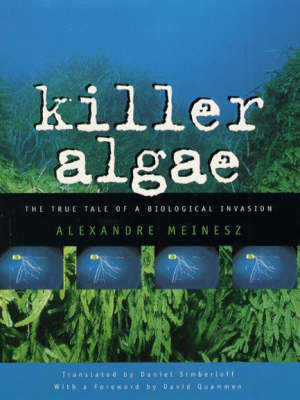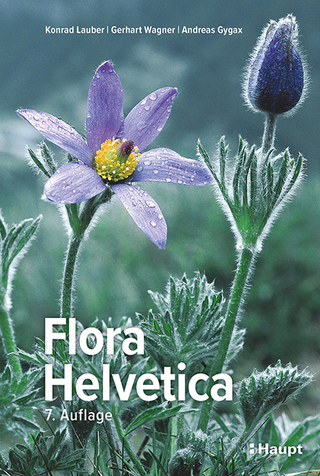
Killer Algae
Seiten
2001
University of Chicago Press (Verlag)
978-0-226-51923-4 (ISBN)
University of Chicago Press (Verlag)
978-0-226-51923-4 (ISBN)
This text presents the biological and political horror story of the algae in the Mediterranean. This work - part detective story and part bureaucratic object lesson - presents a classic case of a devastating ecological invasion and how "not" to deal with it.
In the late 1970s, a Stuttgart zoo imported a lush, bright green seaweed for its aquarium. "Caulerpa taxifolia" was captively bred by the zoo and exposed, for years, to chemicals and ultraviolet light. Eventually a sample of it found its way to the Oceanographic Museum in Monaco, then headed by Jacques Cousteau. Five years later, while cleaning its tanks, that museum dumped the pretty green plant into the Mediterranean. This supposedly benign little plant - that no one thought could survive the waters of the Mediterranean - now covers 10,000 acres of the coasts of France, Spain, Italy and Croatia, and has devastated the Mediterranean ecosystem. And it continues to grow, unstoppable and toxic. When Alexandre Meinesz discovered a square-yard patch of it in 1984, he warned biologists and oceanographers of the potential species invasion. His calls went unheeded. At that point, one person could have weeded the small patch out and ended the problem. Now, however, the plant has defeated the French Navy, thwarted scientific efforts to halt its rampage, and continues its destructive journey into the Adriatic Sea. This text presents the biological and political horror story of this invasion.
For despite Meinesz's pleas to scientists and the French government, no agency was willing to take responsibility for the seaweed, and while the buck was passed, the killer algae grew. In short, this work - part detective story and part bureaucratic object lesson - is a classic case of a devastating ecological invasion and how "not" to deal with it.
In the late 1970s, a Stuttgart zoo imported a lush, bright green seaweed for its aquarium. "Caulerpa taxifolia" was captively bred by the zoo and exposed, for years, to chemicals and ultraviolet light. Eventually a sample of it found its way to the Oceanographic Museum in Monaco, then headed by Jacques Cousteau. Five years later, while cleaning its tanks, that museum dumped the pretty green plant into the Mediterranean. This supposedly benign little plant - that no one thought could survive the waters of the Mediterranean - now covers 10,000 acres of the coasts of France, Spain, Italy and Croatia, and has devastated the Mediterranean ecosystem. And it continues to grow, unstoppable and toxic. When Alexandre Meinesz discovered a square-yard patch of it in 1984, he warned biologists and oceanographers of the potential species invasion. His calls went unheeded. At that point, one person could have weeded the small patch out and ended the problem. Now, however, the plant has defeated the French Navy, thwarted scientific efforts to halt its rampage, and continues its destructive journey into the Adriatic Sea. This text presents the biological and political horror story of this invasion.
For despite Meinesz's pleas to scientists and the French government, no agency was willing to take responsibility for the seaweed, and while the buck was passed, the killer algae grew. In short, this work - part detective story and part bureaucratic object lesson - is a classic case of a devastating ecological invasion and how "not" to deal with it.
Alexandre Meinesz is a professor of biology at the University of Nice and a member of various scientific committees on the environment. Daniel Simberloff is the Nancy Gore Hunger Professor of Environmental Studies at the University of Tennessee, Knoxville.
From the discovery of the alga in Monaco to its arrival in France; the alga grows - and the polemic begins; "Caulerpa Taxifolia", superstar; the stakeholders squabble - and the alga spreads; research progresses - and the polemic persists; Chiaroscuro - 1997-1998; the three lessons of "Caulerpa". Appendices: the biology of "Caulerpa taxifolia" as known in 1991; chronology of a heralded invasion. (Part contents).
| Erscheint lt. Verlag | 9.4.2002 |
|---|---|
| Reihe/Serie | Emersion: Emergent Village resources for communities of faith |
| Übersetzer | Daniel Simberloff |
| Sprache | englisch |
| Maße | 15 x 20 mm |
| Gewicht | 482 g |
| Themenwelt | Sachbuch/Ratgeber ► Natur / Technik |
| Naturwissenschaften ► Biologie ► Botanik | |
| Naturwissenschaften ► Biologie ► Limnologie / Meeresbiologie | |
| Naturwissenschaften ► Biologie ► Ökologie / Naturschutz | |
| Technik ► Umwelttechnik / Biotechnologie | |
| ISBN-10 | 0-226-51923-6 / 0226519236 |
| ISBN-13 | 978-0-226-51923-4 / 9780226519234 |
| Zustand | Neuware |
| Haben Sie eine Frage zum Produkt? |
Mehr entdecken
aus dem Bereich
aus dem Bereich
Gefäßpflanzen: Grundband
Buch | Hardcover (2021)
Springer Spektrum (Verlag)
44,99 €
ein Baum erzählt seine erstaunliche Geschichte
Buch | Hardcover (2024)
Ludwig (Verlag)
23,00 €


